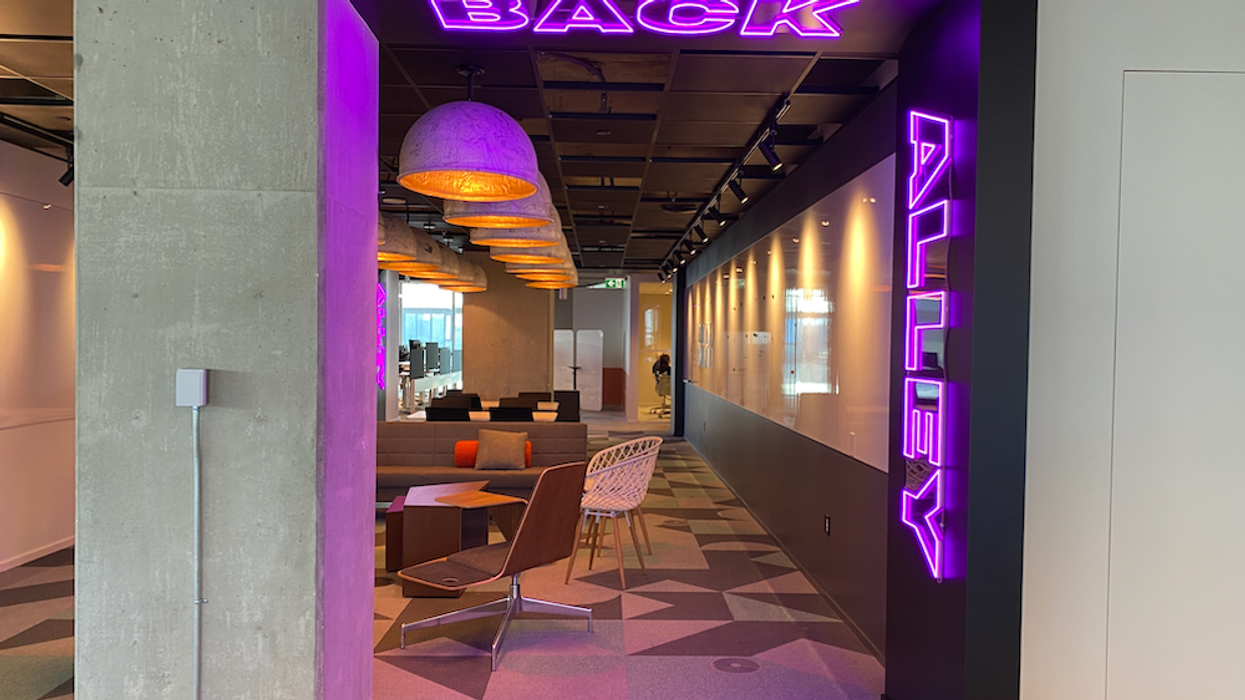In one corner of BDP Quadrangle’s new downtown offices, employees can grab a book, lounge on a sofa or just stop to take in the sweeping views of Lake Ontario.
This space -- dubbed “the Oasis” -- is a light- and plant-filled perch meant to evoke a feeling of calm and wellness in a busy architecture and design office.
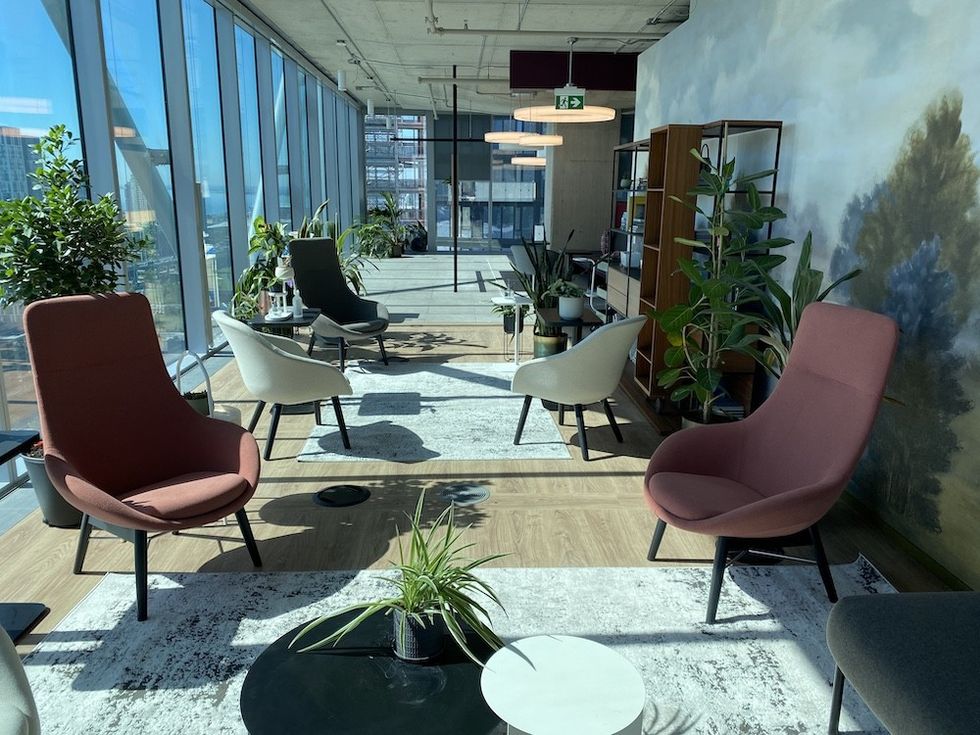
“So much great thought comes from stopping and recharging,” BDP Principal Caroline Robbie said after a recent tour of the company’s new North American headquarters in The Well, the mixed-use development under construction at the northwest corner of Front and Spadina.
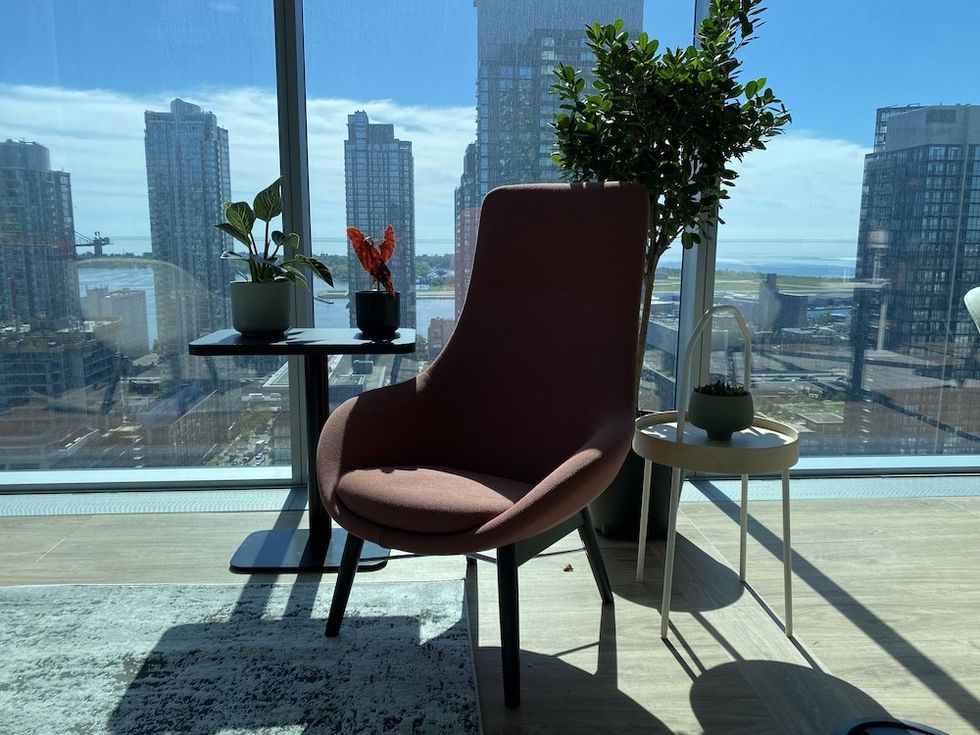
BDP’s new space, however, isn’t yet so busy.
The firm, which signed a lease for nearly 40,000 sq. ft in pre-pandemic 2019, is moving into its new spot amid a remote work revolution. And while some corporations are pushing hard for their workers to return to the office, BDP is taking a more relaxed approach.
READ: “The Office is Not Dead:” How the Pandemic Forced an Evolution of Workspace
The company adopted a flexible attendance policy at the start of the pandemic where employees can come to work when they feel comfortable doing so.
“As far as I'm concerned the world of work has changed,” Robbie said. “This is a huge generational shift we haven’t seen since the invention of the open cubicle in 1964.”
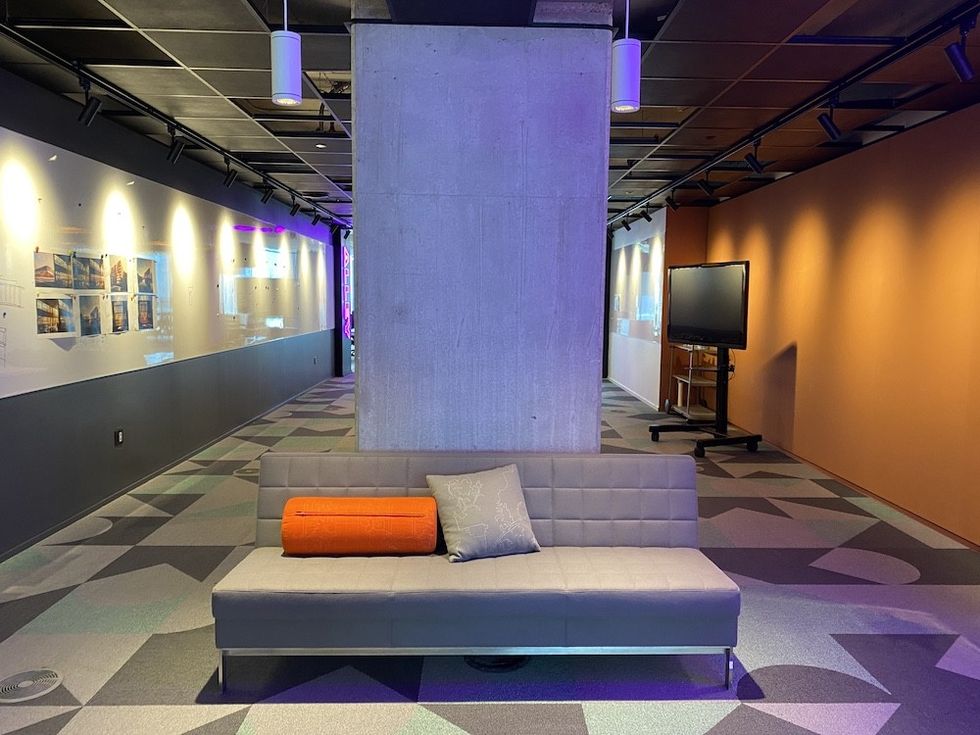
That shift posed a challenge for BDP, which had two storeys of raw office space to reimagine for an uncertain future.
When it signed its lease at the Well three years ago, the growing company needed more space for what was then a 1:1 ratio (one person to one desk). BDP previously occupied about 26,000 sq. ft at 901 King Street West.
The ratio is now 1:7 and the company has about 6,000 sq. ft of unused space for which it hopes to find a subtenant.
Even though coming to the office continues to be optional, Robbie said the company wanted a space that employees would be excited to return to.
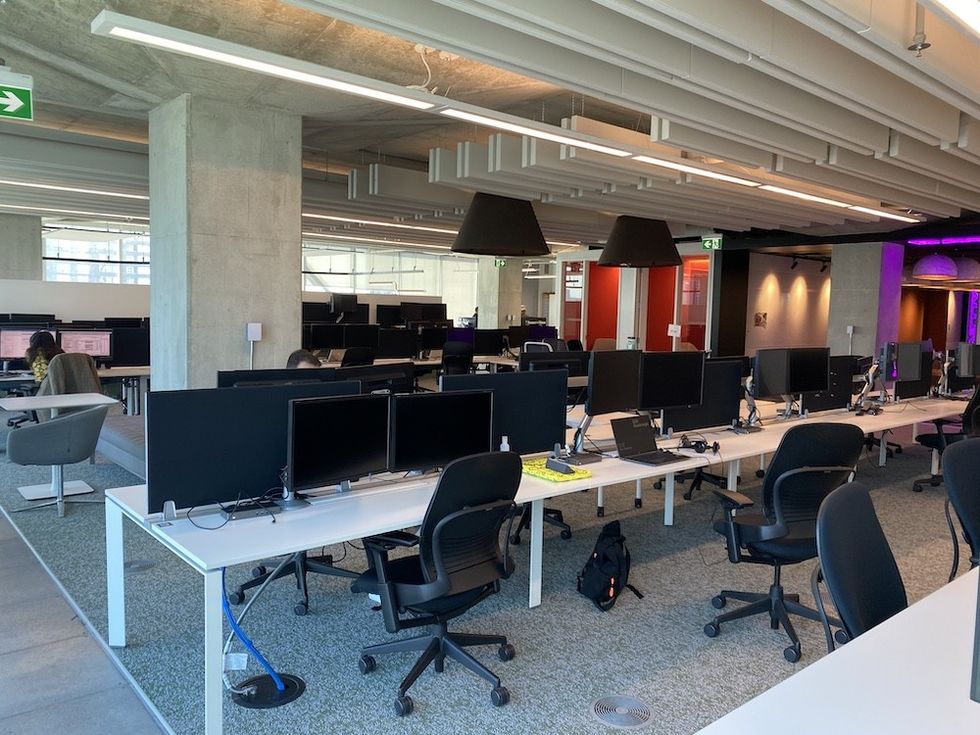
Sit-stand desks that employees can reserve through a software booking system are spread across a series of “neighbourhoods” positioned alongside the perimeter of the building to maximize natural light.
In all, there are six neighbourhoods, including one dedicated to IT -- a department often sequestered in cold, windowless rooms.
All manner of meeting spaces, collaboration hubs and quiet rooms are strategically placed throughout the space to give employees a choice of how to work.
To be sure, the pandemic has forced companies to rethink their workspaces.
“I think smart ones are thinking not how big they are but how they’re used,” said Robbie, who was working remotely and speaking through a video conference.
BDP never reached more than 25% capacity once people started coming back to the office. While Robbie anticipates the new space will attract more employees, the firm remains open to different work styles.
“We had certain people who never wanted to leave,” she said. “We also have people with really awful commutes and working from home works really well for them.”
